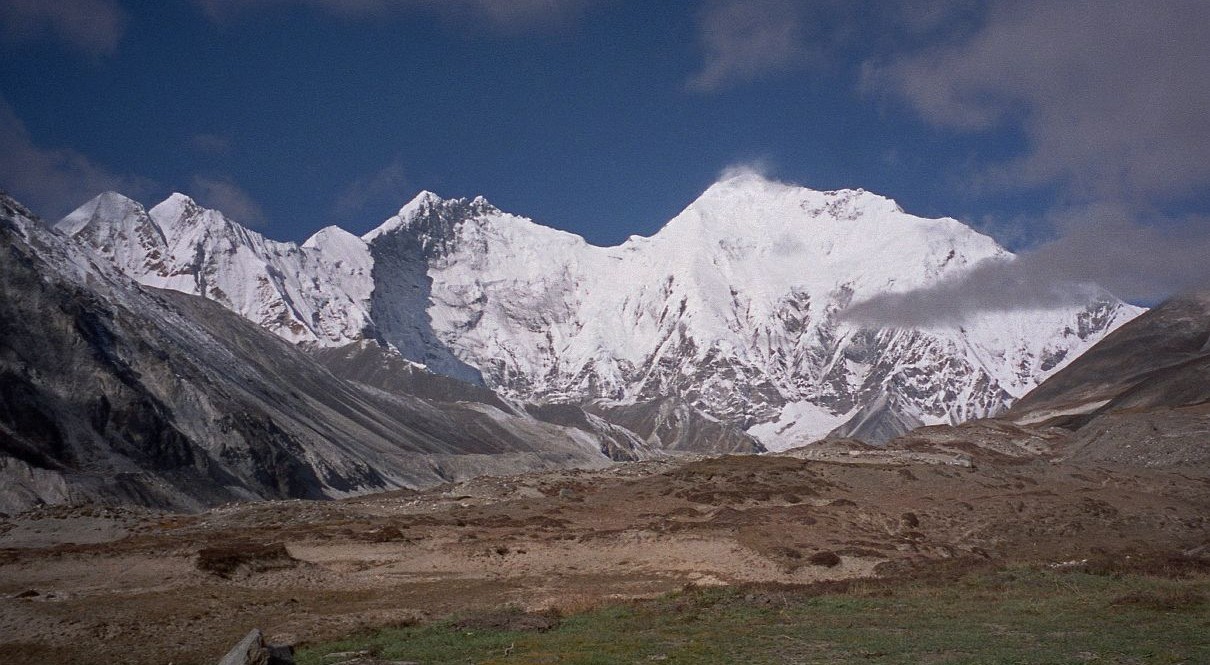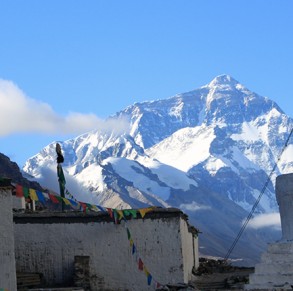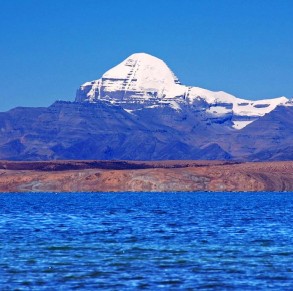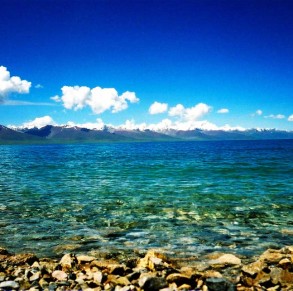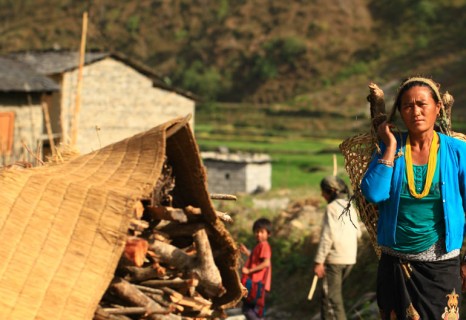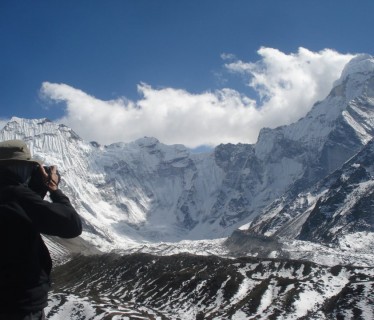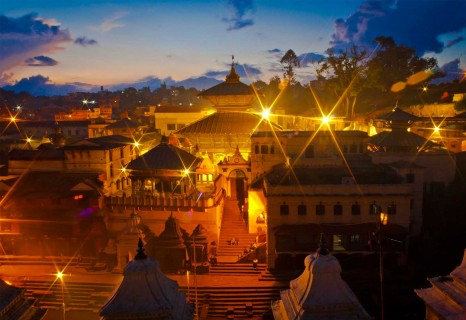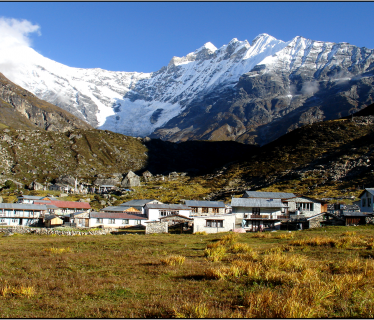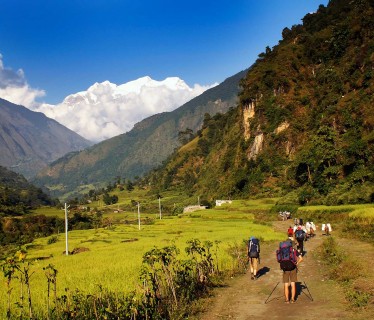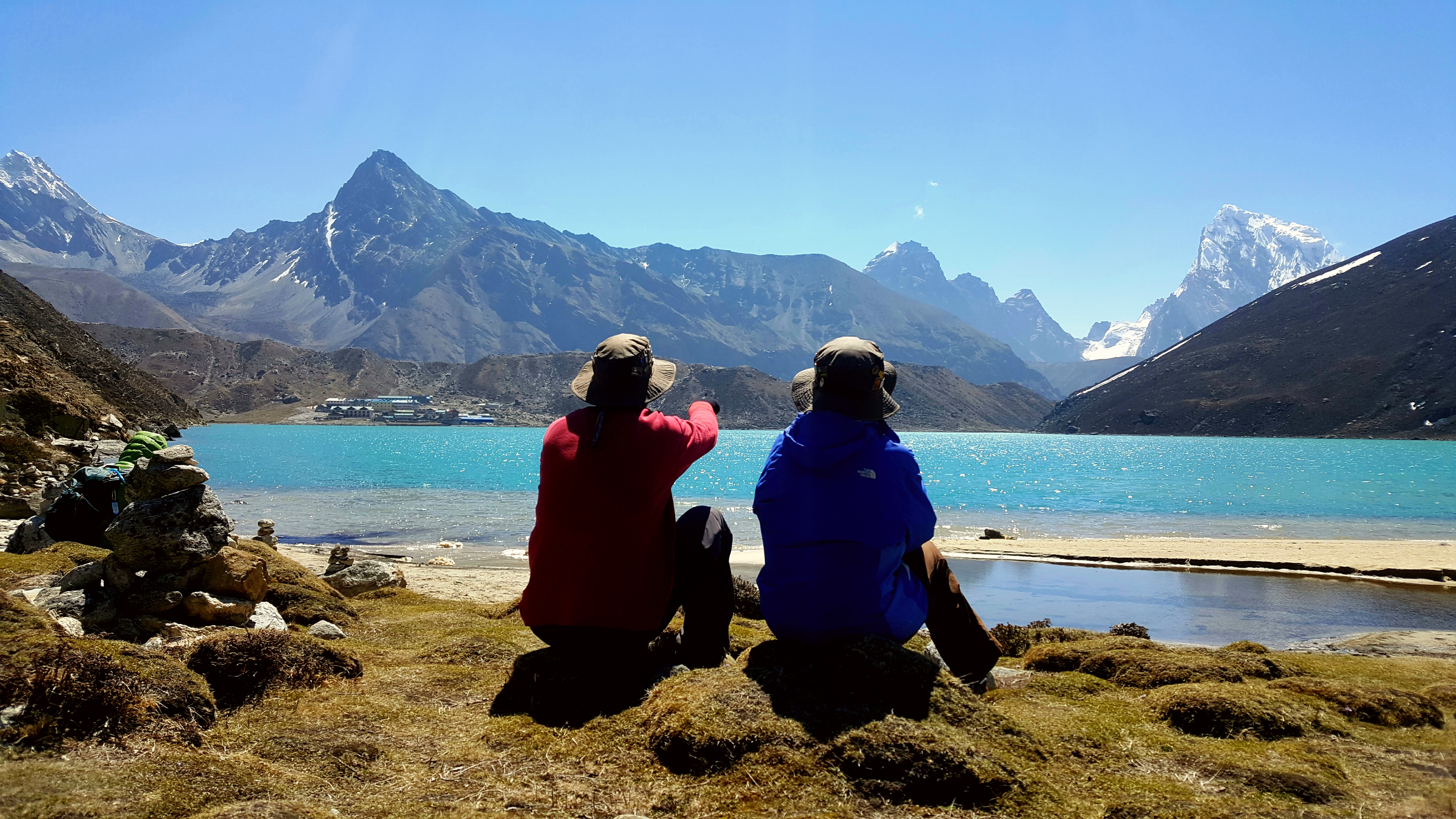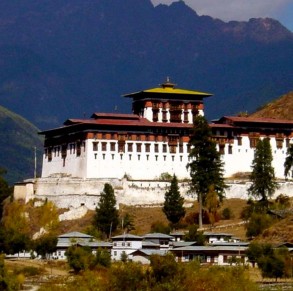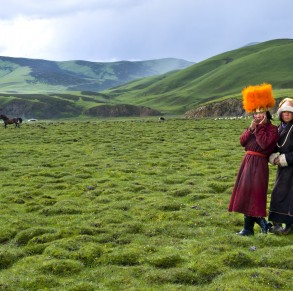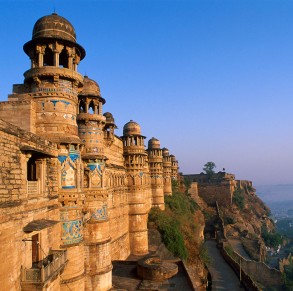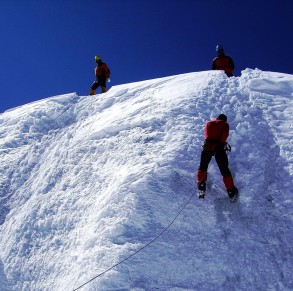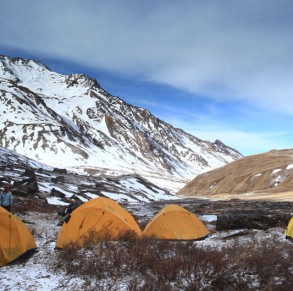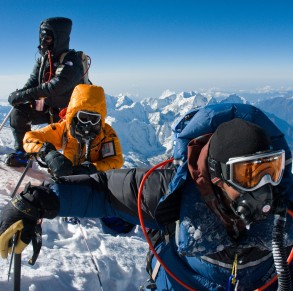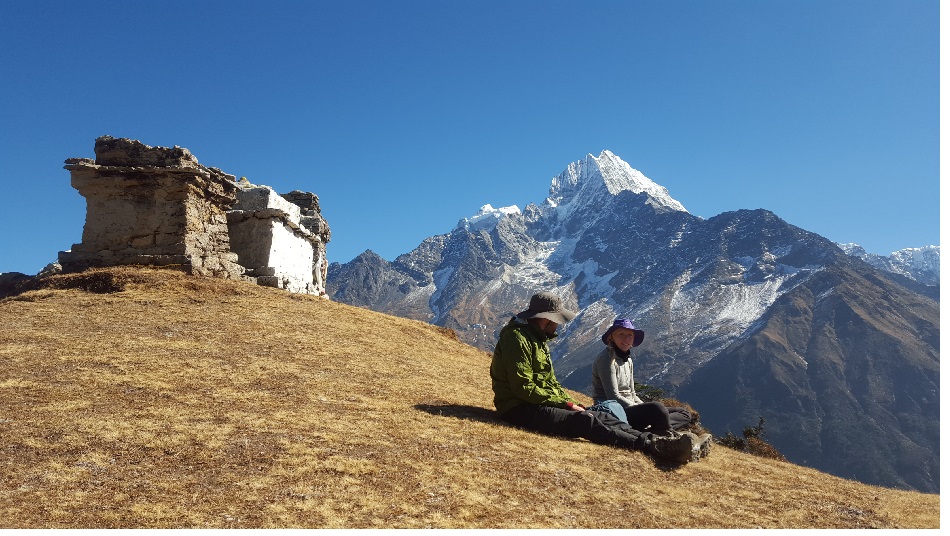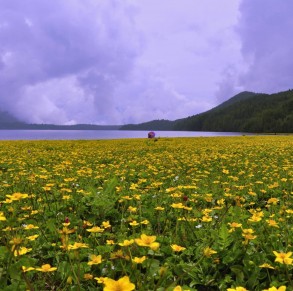Day 01: Arrival in Lhasa (3,650 m/11,972 ft)
Day 02: Sightseeing in Lhasa: Potala Palace, Norbulingka Palace and Tibet Museum: 5 – 6 hours
Day 03: Sightseeing in Lhasa: Sera Monastery, Drepung Monastery, Jokhang Temple and Barkhor Bazaar: 5 – 6 hours
Day 04: Lhasa to Gyantse (3,950m/12,956ft): 265 km, 5 hours
Day 05: Gyantse to Shigatse (3,900 m/12,795 ft): 90km, 2 hours
Day 06: Shigatse to Kharta (3,750 m/12,300 ft) 45 km, 1 hour
Day 07: Kharta to Landrubling (4,800 m/15,700 ft): 4 – 5 hours
Day 08: Landrubling to Jorpokhari (4,268 m/14,000 ft): 3 – 4 hours
Day 09: Jorpokhari to Joksum (4,800 m/15,700 ft): 6 – 7 hours
Day 10: Joksum to Sumthang (4,420 m/14,500 ft): 5 – 6 hours
Day 11: Sumthang to Parthang (4,240 m/13,907 ft): 5 – 6 hours
Day 12: Perthang to Pethang Ringmo (4,880 m/16,000 ft): 4 – 5 hours
Day 13: Discover Pethang Ringmo and Khangshung Valley
Day 14: Reserve Day for Contingency
Day 15: Pethang Ringmo to Rabka Chu: 6 – 7 hours
Day 16: Rabka Chu to Tso Tshuringma (4,880 m/16,000 ft): 4 – 5 hours
Day 17: Tsho Tshurigma to Troshay (4,270 m/14,000 ft): 6 – 7 hours
Day 18: Troshay to Rongbuk (5,050 m/16,564 ft): 4 hours Trek or 2 hours drive
Day 19: Rongbuk to Zhangmu (2,300m/7,544ft) with a visit to the Everest Base Camp: 257 km, 5 hours
Day 20: Zhangmu to Kathmandu (1,350 m/4,428 ft) – 123 km, 4 hours
Day 21: Final Departure
Day 01: Arrival in Lhasa (3,650 m/11,972 ft)
We arrive in Lhasa either from a direct flight from Nepal or via mainland China. If we decide to fly from Nepal, we get to enjoy around an hour long trans-Himalayan flight, considered to be one of the most beautiful air routes in the world. It takes us over Everest (8,848m), Kanchenjunga (8,536m) and other Himalayan peaks and glaciers. If we choose to go to Lhasa via mainland China, we may fly from any of the major Chinese cities or take the world’s highest train route to Lhasa. Upon our arrival in Lhasa, a representative from Snow Leopard Trek will pick you up either from the airport or the train station for about an hour’s drive to our designated hotel in Lhasa. We are advised to take plenty of rest for the remainder of the day in order to minimize altitude sickness. Overnight in Lhasa.
Day 02: Sightseeing in Lhasa: Potala Palace, Norbulingka Palace and Tibet Museum: 5 – 6 hours
We begin sightseeing in Lhasa after breakfast. Today is the day we visit the beautiful Potala and Norbulingka Palaces. Built in the 17th century, Potala Palace provides amazing views of the entire city and houses the private quarters of the Dalai Lama, numerous grand state rooms and chapels. Norbulingka Palace is the summer palace of the Dalai Lama and houses what is considered to be the largest man-made garden in Tibet. Next, we visit the Tibet Museum, the official museum of Tibet, which has a permanent collection of around 1000 artifacts related to the cultural history of Tibet. Overnight in Lhasa.
Day 03: Sightseeing in Lhasa: Sera Monastery, Drepung Monastery, Jokhang Temple and Barkhor Bazaar: 5 – 6 hours
After breakfast, we visit Drepung Monastery, Sera Monastery, Jokhang Temple and Barkhor Bazaar. Drepung Monastery, which was built in the 14th century, is believed to have sheltered around 10,000 monks in the past but as of now there has been quite a declination resulting in only a few hundred. The history, culture, and religious beliefs of the Tibetan people are strongly concentrated and centered in this marvelous monastery. Sera Monastery is a preserved monastery of white-washed walls and golden roofs. Jokhang Temple is another important sacred site which unravels more deep-seated mysteries of Tibetan Buddhism. We further stroll through Barkhor Bazaar (market). With its open air stalls, shops and crowd of pilgrims, it is the nerve centre of Lhasa. Overnight in Lhasa.
Day 04: Lhasa to Gyantse (3,950m/12,956ft): 265 km, 5 hours
Today, we take a scenic drive to Gyantse. On the way, we cross the Khamba La Pass (4,794m) with a brief halt to savor the beauty of the Yamdrok Tso (Turquoise Lake), one of the three largest sacred lakes in Tibet and the beautiful Nazin Kang Sang glacier (7,252m). Soon, we come across another pass, the Karo La Pass (5,045m). From our vehicle, we can enjoy views of huge glaciers tumbling down into the road before reaching Gyantse. In Gyantse, we visit the Khumbum Stupa, Phalkot Monastery and Gyantse Dzong (fortress), which is one of the best preserved dzongs in Tibet. Overnight in Gyantse.
Day 05: Gyantse to Shigatse (3,900 m/12,795 ft): 90km, 2 hours
After breakfast, we drive towards Shigatse, the second largest city in Tibet. In Shigatse, we visit the popular Tashilhunpo Monastery which holds both historical and cultural importance for being founded by Gendun Drup, the First Dalai Lama in 1447. After sightseeing in Shigatse, we will have the remainder of the day free for resting. This will help us with acclimatization and the next day’s long drive. Overnight in Shigatse.
Day 06: Shigatse to Kharta (3,750 m/12,300 ft) 45 km, 1 hour
After breakfast, we drive to Kharta via Shegar. We cross Tso La (5,420m/17,782ft) and Gyatso La passes (5,252m/17,230ft). In Shegar, we meet our Nepalese staff and then we head for Kharta. On the way, we cross another high pass, Pang La (5,150m/17,000ft) and enjoy spectacular views of peaks which are over eight thousand meters such as Mt. Everest, Cho-Oyu and Makalu. We descend down from the pass heading west to the Rongbuk Valley. Overnight in Kharta.
Day 07: Kharta to Landrubling (4,800m/15,700ft): 4 – 5 hours
We begin our trekking today by walking along the banks of the Kharta River. The trail provides us with amazing views of the local villages and barley fields. After a few kilometers, the trail splits. We follow the upper trail that leads to Shao La Pass. As we climb steadily up, we pass through rhododendron and highland conifer forests. We arrive at Landrubling and camp on a shelf above the Kharta River. Overnight in Landrubling.
Day 08: Landrubling to Jorpokhari (4,268 m/14,000 ft): 3 – 4 hours
On our journey from Landrubling to Jorpokhari, we will be walking along a ridge on moraines. This is a short trip that will help us to become properly acclimatized to the higher altitude. After walking on the moraines we reach twin lakes, also called Jorpokhari. The twin lakes are located below the Shao La Pass. Overnight in Jorpokhari.
Day 09: Jorpokhari to Joksum (4,800 m/15,700 ft): 6 – 7 hours
We ascend steadily over rocky grounds to reach the Shao La Pass (4,800 m/15,748 ft). From the top of the pass, we get to enjoy mesmerizing views of Mt. Everest (8,848 m/29,029 ft), Cho Oyu (8,201 m/26,906 ft), Makalu (8,481 m/27,825 ft), and other high Himalayan peaks. We descend down again through the rocky slopes and notice the change in the scenery as it changes from barren, rocky slopes to lush rhododendron, birch, and willow trees. We walk further down the valley through thick fir and juniper forests and reach Joksum. Overnight in Joksum.
Day 10: Joksum to Sumthang (4,420 m/14,500 ft): 5 – 6 hours
We hike on a steep trail through juniper and rhododendron forests to reach high pastures above the Kama River. From here, we have splendid views of Mt. Everest and Lhotse; and of high ridges south of the Kama River. We continue with our trail and pass through alpine meadows, yak herders’ camps and a serene green lake. We then reach Sumthang, a large meadow with great views of the Khangshung Valley. Overnight in Sumthang.
Day 11: Sumthang to Parthang (4,240 m/13,907 ft): 5 – 6 hours
We climb on a ridge up the Khangshung Valley. Then, descend down through rhododendron and conifer trees. We enjoy the wonderful views of Everest, Lhotse, Lhotse Shar and other high mountains. As we climb higher, the vegetation starts getting increasingly thinner and we come closer to the Everest’s Kangshung face. We enter the Khangshung Valley, drained by the Khangshung stream and cross it. We ascend further more until we arrive at our campsite in Parthang. Overnight in Parthang.
Day 12: Perthang to Pethang Ringmo (4,880 m/16,000 ft): 4 – 5 hours
We climb the Kangshung Valley glacier rim along the moraines. This is one of the steepest sections of the climb. The huge faces of Mt. Everest and Lhotse now appear to dominate the sky. Mt. Chomo Lonzo (7,790 m) also appears very close. At the end of the lake, there is a cave believed to be the meditation retreat of Padmasambhava. Ascending further higher, passing the bend of Orga, we arrive at our next campsite. Overnight in Pethang Ringmo.
Day 13: Discover Pethang Ringmo and Khangshung Valley
Today is set aside for acclimatization. We hike along the glacier and discover the Khangshung base camp (5,185 m/17,000 ft) from where Everest is climbed from the eastern side. The place is surrounded by Himalayas and the view of Kangshung face and Lhotse appear spectacular. Towards the north of camp, there are two lakes on a ridge overlooking the Khangshung Valley. We may even take an excursion to this place which is on the Nepalese side of the border overlooking the Makalu base camp area. Overnight in Pethang Ringmo.
Day 14: Reserve Day for Contingency
We keep a day in reserve for any contingency. There is no such guarantee of favorable weather; therefore, this day is set aside in case we are unable to complete our schedule.However, if the trip does go smoothly, this day will most likely be skipped. Overnight in Pethang Ringmo.
Day 15: Pethang Ringmo to Rabka Chu: 6 – 7 hours
Retracing our steps down the valley along the Khangshung Glaciers, we cross a rock slide opposite the Chomolonzo glacier, and pass Pethang to a stream crossing at the Rabka Chu. The camp (4,120m/13,500ft) on the grassy meadow across the river is a pleasant place to spend the afternoon. With 4 hours of hiking, we can also reach this campsite from Pethang Ringmo by taking a side trip to Guru Rimpoche`s cave at Tse Chu Lake. The trail climbs high above Okpa meadows, crosses Lamtsho (4,940 m/16,200 ft), then descends steeply to the lake. Overnight in Rabka.
Day 16: Rabka Chu to Tso Tshuringma (4,880 m/16,000 ft): 4 – 5 hours
We return via Opka Rabka Chu. We can climb uphill to a Pangboche, which is a small meadow. Crossing the great moors of Mt. Karma Changri and glacier in the background, we camp at Lake Tso Tshuringma. The horizon in the south is still blocked by the mass of Makalu. There is a possibility that we also may get to see nomad camps in the area. We continue to hike steeply over alpine slopes for another couple of hours to a small but beautiful lake at the base of the Langma La (5,320 m/17,454 ft). Overnight in Tsho Tshurigma.
Day 17: Tsho Tshurigma to Troshay (4,270m/14,000ft): 6 – 7 hours
We climb over steep rocky grounds to reach the Langma La Pass (5,320m/ 17,454ft), the trail leading a climb between slabs of rock. Huge prayer flags hang on the cliffs overlooking the pass. They are hung in memory of the spirits and deities of the Bon people living in the area. From Langma La, we bid farewell to the Khangshung Valley and the impressive panorama of some of the world’s highest mountains. We plunge ahead through a moraine and glaciated valley. We descend steeply for a few hours on the trail and encounter repeated passages of nomadic yak caravans. Our camp is on a grassy meadow beside a clear stream in Troshay. Overnight in Troshay.
Day 18: Troshay to Rongbuk (5,050 m/16,564 ft): 4 hours Trek or 2 hours drive
From Troshay we trek back to Kharta then drive to Rongbuk. . The trail is a steep descend to the village of Lhundupling. We cross the river below Yulba village and are back to the place we started our trek. We then drive towards Rongbuk. We enjoy the mountain landscape on our drive as the valley gets wider and the settlement thicker. At one bend, the huge north face of Everest suddenly appears in the horizon. After checking in at our hotel in Rongbuk in the afternoon, we visit Rongbuk Monastery, the highest monastery is the world. Overnight in Rongbuk.
Day 19: Rongbuk to Zhangmu (2,300 m/7,544 ft) with a visit to the Everest Base Camp: 257 km, 5 hours
We leave Rongbuk in the morning to visit the Everest Base Camp (5,250m/17,220ft). On the way, we enjoy spectacular views of high mountains like Cho Oyu (8,201m/26,906ft), Shishapangma (8,013m/26,289ft) and, of course, the mighty Everest (8,848m/29,028ft) also known as Mt. Chomolongma in the Tibetan side. Today, we accomplish one of the major highlights of our trip, reaching the base camp of Mt. Everest. We make approximately a 16km round trip around the Everest Base Camp. The base camp itself is dry and barren, but the view of Everest is more than compensating. After spending some quality time at the base of the world’s highest mountain, we make Zhangmu our next destination. Overnight in Zhangmu.
Day 20: Zhangmu to Kathmandu (1,350 m/4,428 ft) – 123 km, 4 hours
A few kilometers drive from Zhangmu to Friendship Bridge over the Bhote Koshi River brings us to immigration control in Kodari where we are expected to complete some custom formalities. We then depart with our Tibetan guide and walk across the river where a Nepalese staff will be waiting for us. After around 4 hours of driving through deep valleys, we reach Kathmandu. Overnight in Kathmandu
Day 21: Final Departure
Our journey in Nepal comes to an end today! A Snow Leopard Trek representative will drop you off at the airport approximately 3 hours before our scheduled flight. On our way to home, you have plenty of time to plan our next adventure in the wonderful country of Nepal.


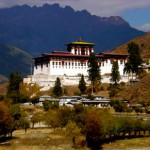
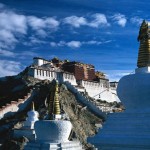
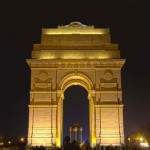

 English
English